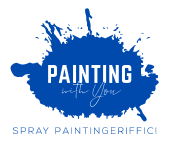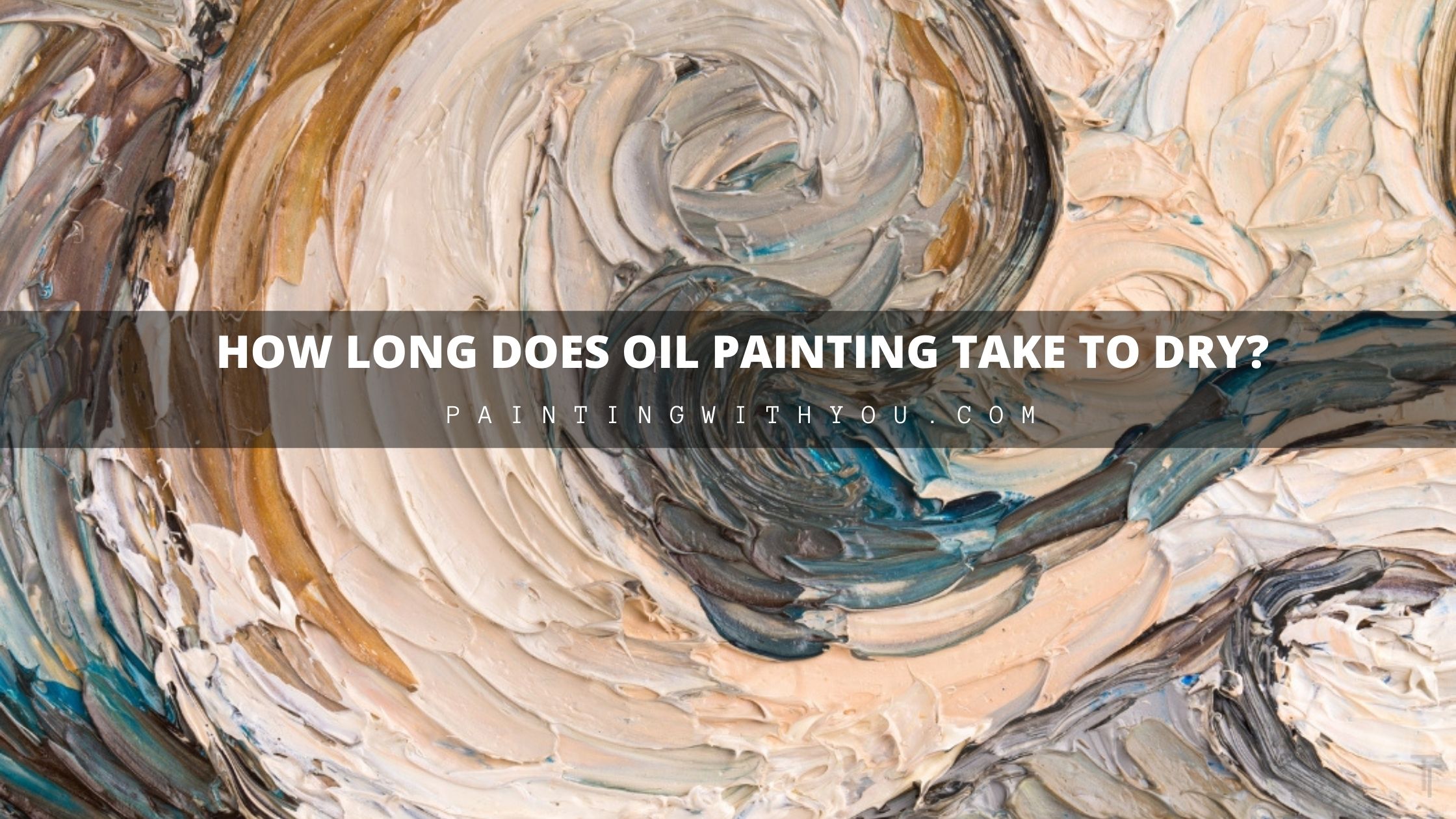Oil painting is a medium that has been around longer than most other forms of paint, and their creation has withstood the test of time. One of the most frequent questions is how much time oil painting take to dry, and how can we help prep or speed up the process?
Unlike other water-based paints, oil paint generally has a slower drying time that requires a lot of patience. Older oil paints that were used tended to take a day to dry on a canvas thus needed their own space to dry.
We will cover everything you need to know and ask yourself about oil and drying time.
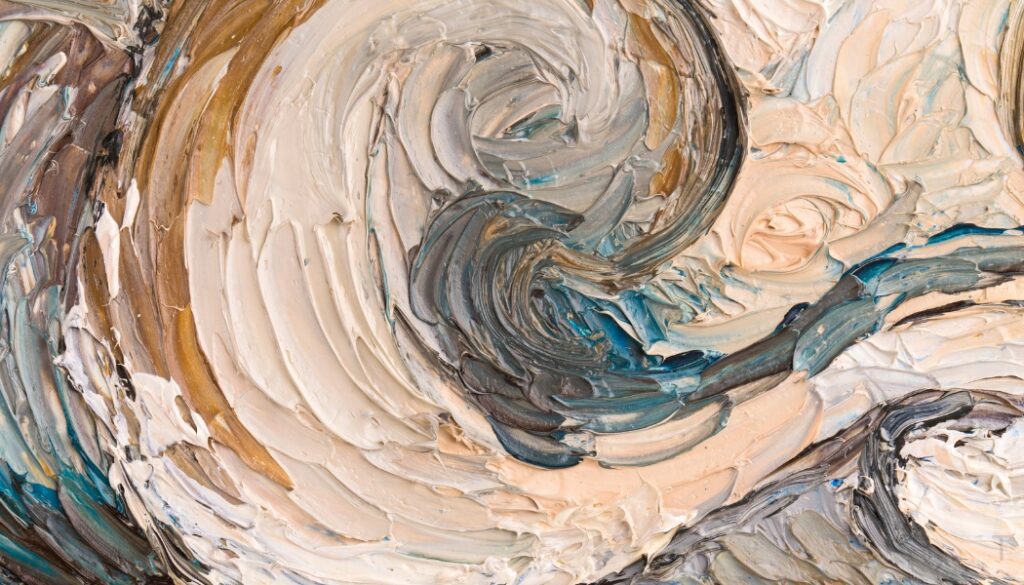
How Long does Oil paint generally take to dry?
It used to take more than a whole day for the oil to dry since it was made with only some pigment and oil, usually from linseed.
With modern advances, we typically add a filler or substitutes to make it easier to use and sometimes to speed up the drying process. So oil paint tends to average about eight hours for the first thin layer on the fastest drying paint but can usually take more than 24 hours even weeks for more ambitious work.
However, there are many other factors to consider and note; unlike water-based paint, it usually dries by oxidation. So some of the examples that affect it is:
- The surface layer the paint is on
- The painting technique used on the oil painting
- The oil in the paint itself
- Lighting
- Humidity
- Airflow
- And even the pigment.
They could be using different oils, as while linseed oil is most common, it isn’t the only kind available. As poppy, safflower, and walnut oil are used with their own drying time and benefits.
Can Surface Affect Oil Paint Drying time?
Considering what you’re painting on can be the basis of your painting, it’s a good idea to keep an eye on it. As depending on the material, it can either help quicken it or speed up the process.
Painting on Canvas
Painting on an even canvas will usually be the driest medium to paint on. Because the cloth-like material can easily absorb the paint, it tends to dry quicker than most surfaces.
NOTE: Canvas is perfect oil surface especially since air can reach through the back of the cloth to accelerate the process.
Painting on a Wall
While it can vary if you are painting a wall outside, the wind and sun will speed up the oxidation process of the oil and drying time will be shorter.
If it is indoors, there is less of that, and if it has an uneven surface, it can take longer in contrast. Small notches will allow for the paint to slip in and stack on each other. You will end up waiting extra time for paint to dry in those specific areas.
Glass Surface
As a non-porous surface, painting on glass, will take the longest to dry. In most cases it takes several days. As its non-porous nature means oxygen can’t get behind the paint itself. This can make the drying process really slow take lot more to dry compared to other surfaces.
Can Painting Techniques affect how long oil takes to dry?
Several painting techniques can alter the drying time of the oil paint. Some require more layers than others such as brushwork, using a paint knife, or if you’re blending two tones.
NOTE: Keep in mind, uneven surface will prolong drying time even more.
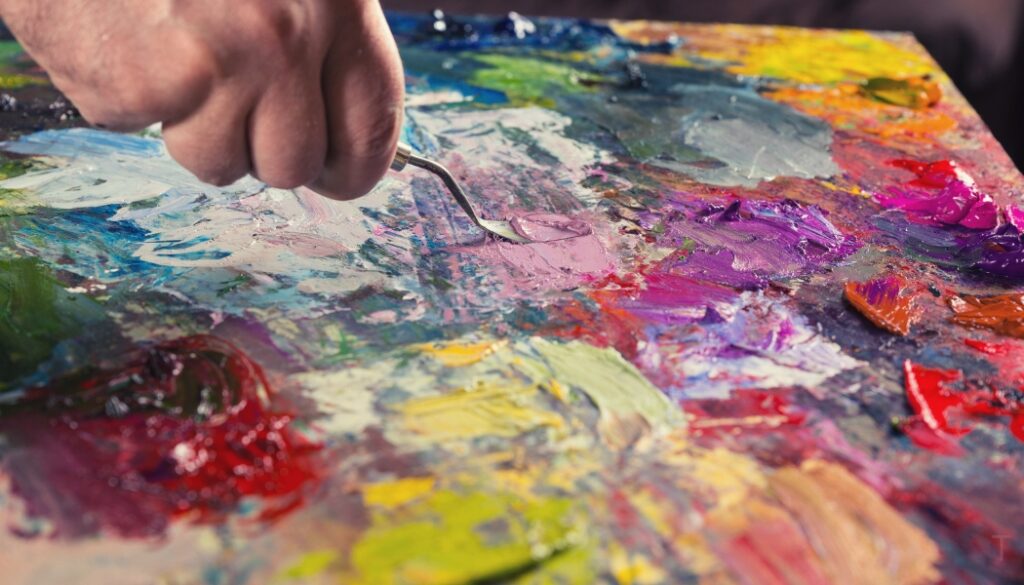
Palette Knife Painting
If you’re using a knife to paint to give texture, this can provide exciting textures and styles to your canvas. Though some of these can leave a slightly thicker layer compared to a brush. This means it can take longer to dry based on how thick you’re putting on the texture.
NOTE: The more layers you put on the canvas, the denser the coating and the longer it can take. Especially if you're using the knife to mix the colors, the pigments, and oil.
Blending
When you’re painting, you can be trying to make the thing you are painting meld together. If you are trying to merge two different colors, there are two methods.
- You are only barely touching the paint, then after use a clean brush to blend the oil paint. With This method paint will dry quicker though it sacrifices the vitality of the colors.
- There is Another method to keep the intensity of the paint which requires much more strokes. For example, if trying to blend black and white instead of brushing them together, use a mix of the two colors to blend. This technique will require a lot more layers to the paint but will help increase its vitality.
Layering
Sometimes you will want to add an extra layer on top to try and get a specific texture or look. Maybe the colors appear a bit washed out, or you wish to add something on top of it.
NOTE: With this technique, you need to allow the paint to dry in between each layer so keep in mind it will absolutely extend the drying time by at least one day.
Can Different type of Oil Medium affect drying time?
The main difference between oil paints usually comes down to the binding agent itself, the oil in the paint. Linseed is the oldest and still most used oil in the paint, but some alternatives got developed in modern times.
Besides linseed, there is walnut oil, poppy, and safflower oil. Each oil painting has its own unique properties that can affect the paint as a whole.
Linseed Oil
A painter’s traditional oil is most commonly used in paint for its flexibility and reliability. When refined, it gives the color a glossy and transparent feel. It tends to yellow with years but is the least likely to crack as it’s drying compared to the other two.
Linseed oil roughly takes around thirteen hours to fully dry to the touch on a canvas and around a week to cure.
Poppy Oil
This oil-paint ingredient can take the longest to dry. It is suitable for a project that can’t be done in one session. But it can be challenging to wait almost a week for the paint to dry. Like Walnut oil, it won’t begin yellowing once dried and preferred oil for white and blue colors.
Walnut Oil
This oil tends to dry slowly compared to poppy oil, setting at around four to five days. It can crack if not careful however it won’t begin to yellow like linseed, making it great for white or blue colors.
Safflower Oil
Despite the belief that safflower dries slower than linseed, in reality, they have a very similar drying time. There have been actual studies comparing its drying time, showing it is very similar to linseed drying-wise. Though some factors might prolong the process, they are few and far between.
Do note it only dries as quickly as linseed with a drying agent in the paint. Without it, the oil takes much longer to dry. So if you desire to make your own oil paint with safflower oil and pigment, keep in mind that you need the drying agent.
TIP: If safflower oil isn't an option and you desire to avoid yellowing, You can mix the different oil-based paint to try and gain the desired results.
Does the Environment Affect Oil Paint Drying time?
The environment can significantly affect how long your art piece will take to dry. Linseed oil can take three days in the summer to dry fully, Three to five days in a slightly lit room, and sixty days if the room is entirely dark.
This is just the oil itself, and some drying materials like cobalt that some paints have can make it dry quicker. This allows linseed and safflower to dry in thirteen hours.
Besides lighting, there is also humidity and dust to keep in mind, which can prolong the process.
Lack of Lighting
If you’re finished painting on the canvas and wish to quicken the drying time, a well-lit room can help. Likewise, if you want to keep it wet, you can keep it in the darkroom or area to stay wetter longer to work on.
PRO TIP: If you need it wet longer, you can use things like a baking sheet to cover a canvas or keep the light off. Just be careful not to press against it. However, be cautious as it can increase the chance of the painting yellowing depending on the oil paint from the lack of light.
Humidity on oil paint
In contrast to how proper lighting can shorten the time it takes for oil paint to dry; humidity can extend it. As oil paints tend to cling to the water in the air to prolong the drying time.
So, if it is raining outside, the lack of sunlight and the wet air will extend how long it takes for the oil paint to dry.
Air Flow
Have you ever blown on something to try and get it to dry faster? The same thing can be applied to oil paint though you wouldn’t want to try blowing on a wall or canvas.
If the airflow in the room is stagnant, this will increase the wait time of your painting.
TIP: The air current can help the oxidation of the painting, which isn't possible in a non-ventilated room. It might be a good idea to open a window or air conditioner.
Does the Pigment make oil longer to dry?
While the oil in the paint can determine how long the base paint can take and the environmental effect more directly, another factor to consider is the pigment.
Some pigments can help speed up the drying time of the oil paint. For most reliable results, it is best to use oil paint with the purest pigment.
Fastest Drying Pigment (Two Days)
- Permanent Mauve (manganese)
- Cobalt Blues
- Prussian Blue
- Raw Sienna
- Umbers
- Underpainting White
These colors contain a metal, like cobalt, that is usually used as a drying agent in other paint colors. So, it’s no surprise that these would end up being the fastest drying oil paints.
While others on this list, like the umber or Sienna, contain an oxidizing chemical that helps to allow it to dry faster than other pigments. So usually, brown and blue pigments tend to be the fastest drying colors.
Slower Drying Pigment (Five days)
- Winsor Blues and Greens (phthalocyanines)
- Burnt Sienna
- Cobalt Violet and Greens
- Ultramarine Blues
- Mars colors
- Sap Green
- Permanent Alizarin Crimson
- Ochres
- Cadmiums
- Lamp Black
- Ivory Black
These tend to be more of a mix of pigments with good drying pigment and slower ones like copper and cobalt. So, these colors tend to average out to five days because of the mixed oil paint.
Slowest Drying Pigment
- Winsor Yellows and Orange (arylide)
- Quinacridones
- Alizarin Crimson Titanium
- White Zinc White
These colors will take the longest to dry, not just because of the pigment itself. It is also because of the amount of oil required in the paint.
It’s complicated to explain , but some paint needs more oil with specific pigment to create paint. The material tends to be much more coarse than other pigments, thus taking even longer to dry.
How will I know when my oil paint is dry?
There are several approaches to determine if your paint is dry is the most common is the touch set method.
Very gently touch a parchment of the color to test the paint dryness. At this point you will evaluate if surface level is dry. To test if it is cured, use your nails in an area that isn’t noticeable and press against it. If it makes a slight indentation, then it still needs more time to fully dry.
Thankfully oil paints have the quickest cure time compared to water-based or chalk-brand paint. Usually needing only a week to completely cure compared to the thirty days of other types of paints.
NOTE: Cure is a term used to mean that the undercoat of the paint is fully solid since calling it 'dry' only refers to the surface-level layer you touch.
How do we help oil paintings dry faster?
There are many different methods to increase the drying time of your oil paints. We can start it in the order:
- Choosing right surface
- Using sunlight or artificial light
- Getting rid of the Humidity
- Fans to promote airflow
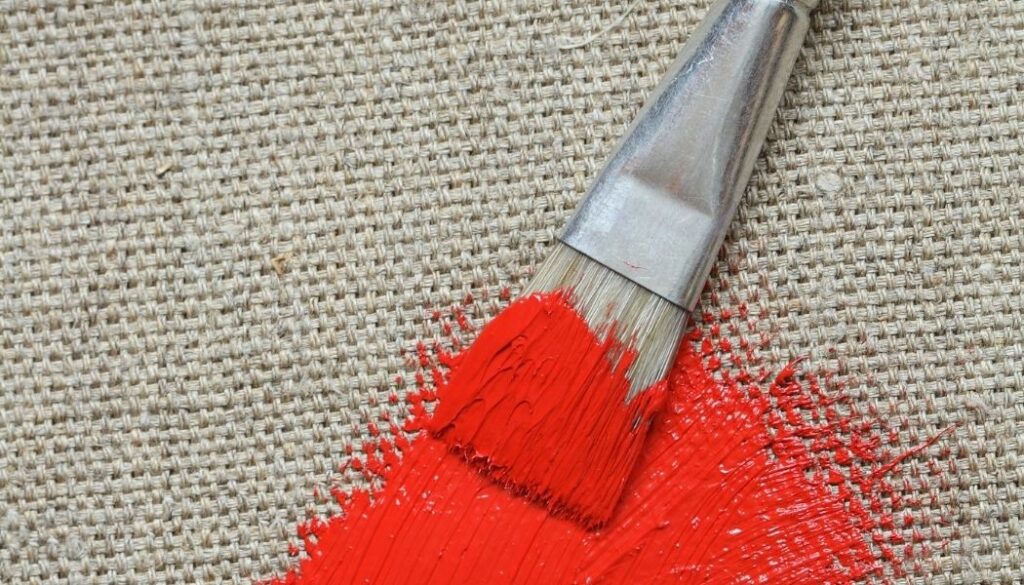
Painting Surface
Always make sure you are painting on an even surface since uneven painting can prolong the drying process. Also painting on Canvas will Will dry much faster compared to glass.
Using sunlight or artificial light
If your oil painting is indoors, opening the blinds can help speed up the process. This comes with the added benefit that linseed oil paint benefits the most from direct sunlight.
As it delays the yellowing process and returns it to its original coloration.
NOTE: Be careful as too much direct sunlight can cause UV damage to the color as it dries. Indirect artificial light and warmth might work better if you don't want your colors to become washed out while drying.
Getting rid of Humidity
Because humidity from rain or the environment can prolong the drying process, there are several methods you can consider.
- Buying a dehumidifier
- Keeping the room or window open
- Air conditioner to keep the house cool and get rid of hot, humid air
- Make sure your ventilators for bathrooms are on long after a hot shower
- Use Charcoal Briquettes – put in a basket in the room and replace every 2-3 months.
Fans can promote Airflow
Depending on the room or where you’re painting, airflow can play a significant factor. Good airflow can help the drying process by taking the stagnant air and getting rid of the room’s humidity. As for how the fan should be set up:
- Don’t have the fan pointed directly at the painting as it can smear.
- Make sure the fan is in the inside of the room farthest end.
- Best if the fan can turn its head to get all of the room to circulate the air.
Related Questions
While it would seem like a good idea considering one of the methods of speeding up the drying process is a fan, this isn’t one of them. The main reason is that a blow dryer is much harsher, hotter, and could end up messing up the paint by making it crack. Just a regular fan will do.
The general consensus is to varnish any oil painting is that you should wait around six months after it’s dried. Since if done too early, it can soften the paint, melding with it and cause it to wrinkle and crack. This will make any varnish removal impossible, so if you can wait, that would be recommended.
